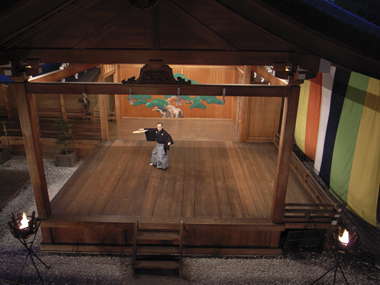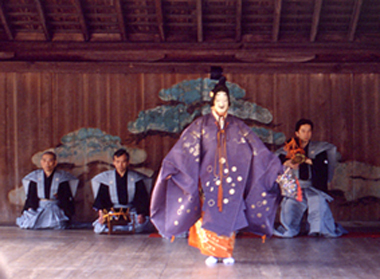Nihon jaia
Noh Theater Lecture and Monologue
Noh (能) is a Japanese lyric drama that had its heyday in the seventeenth century, in this period dates the early printed texts attributed to Kwanami and his son Zeami (both from early fourteenth century). Noh Theater comes from the ritual dances of the temples, folk dances of Buddhist writings and poetry, mythology and Japanese and Chinese folktales. In opposition to the Kabuki Theater, Noh is an aristocratic drama that today continues attracting audience and is represented in a large quadrangle, surrounded on two sides of audience. On one side, there is a balcony with a choir of ten singers and at the back, a platform for four musicians. There is no backdrop and the scenery is only four posts with a roof to represent a palace, a temple or another place. There are two main actors who are accompanied in some scenes and are dressed with great wealth.
Activities in the Festival:
Lecture on Noh Theater.
Representation of a Noh Theater Monologue.
Osami Takizawa
Osami Takizawa is a Professor at the Autonomous University of Madrid. Takizawa is Ph.D. in Medieval History at the Universidad Complutense de Madrid and one of the leading specialists in the study of Spanish-Japanese contacts during the XVI and XVII centuries. Another of his lines of research has to do with the Noh Theater. Besides informative talks about Noh Theater, Prof. Takizawa has participated in numerous events representing monologues, for example the Japan Day organized by the Institute of Japanology (2007) or the more recent IX Japan Cultural Week organized by Japanese Hispanic Cultural Center of the University of Salamanca (2009).
More information on Noh Theater:

- Source: Nagarazoku




